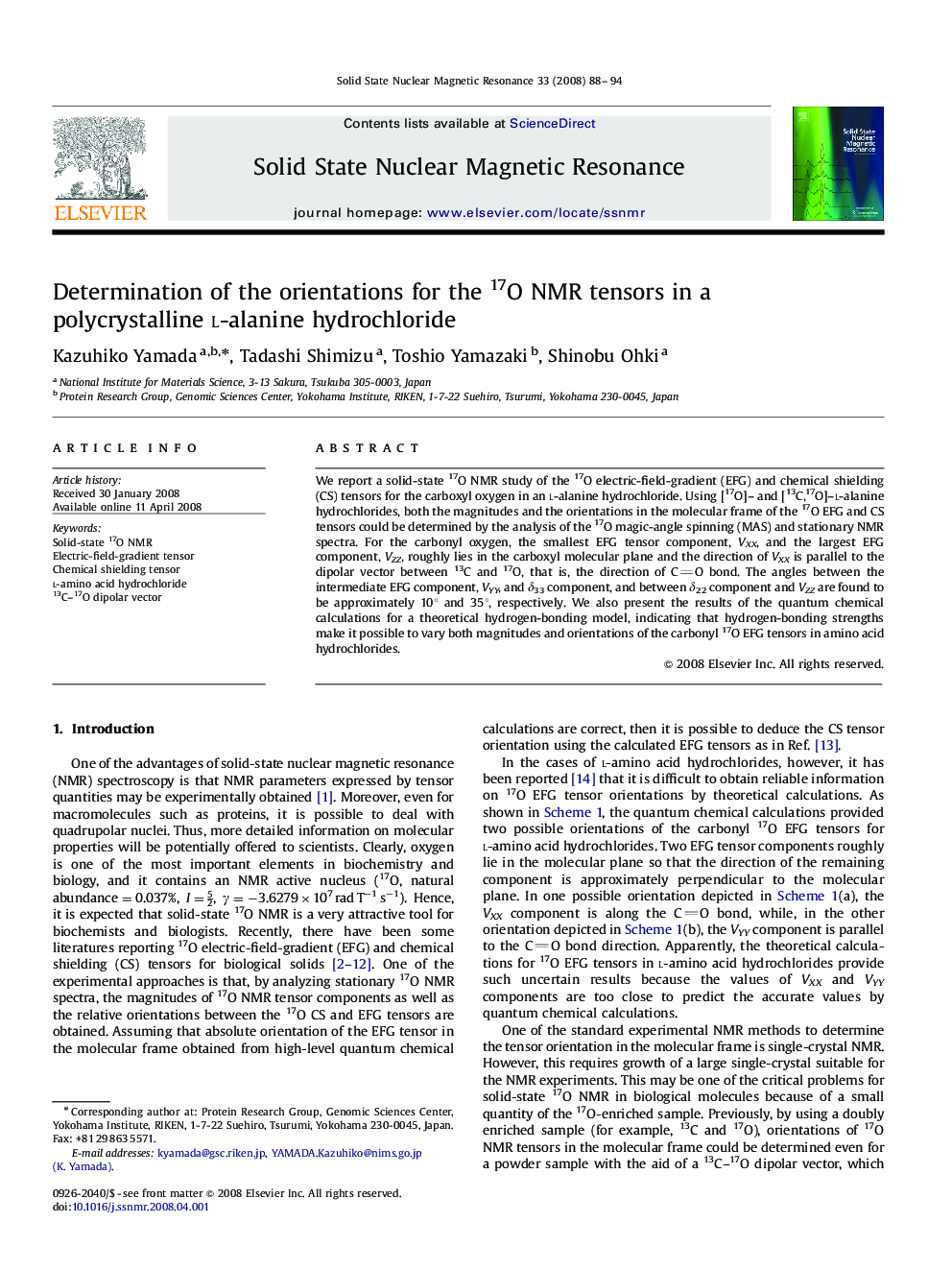| Article ID | Journal | Published Year | Pages | File Type |
|---|---|---|---|---|
| 5420746 | Solid State Nuclear Magnetic Resonance | 2008 | 7 Pages |
Abstract
We report a solid-state 17O NMR study of the 17O electric-field-gradient (EFG) and chemical shielding (CS) tensors for the carboxyl oxygen in an l-alanine hydrochloride. Using [17O]- and [13C,17O]-l-alanine hydrochlorides, both the magnitudes and the orientations in the molecular frame of the 17O EFG and CS tensors could be determined by the analysis of the 17O magic-angle spinning (MAS) and stationary NMR spectra. For the carbonyl oxygen, the smallest EFG tensor component, VXX, and the largest EFG component, VZZ, roughly lies in the carboxyl molecular plane and the direction of VXX is parallel to the dipolar vector between 13C and 17O, that is, the direction of CO bond. The angles between the intermediate EFG component, VYY, and δ33 component, and between δ22 component and VZZ are found to be approximately 10° and 35°, respectively. We also present the results of the quantum chemical calculations for a theoretical hydrogen-bonding model, indicating that hydrogen-bonding strengths make it possible to vary both magnitudes and orientations of the carbonyl 17O EFG tensors in amino acid hydrochlorides.
Related Topics
Physical Sciences and Engineering
Chemistry
Physical and Theoretical Chemistry
Authors
Kazuhiko Yamada, Tadashi Shimizu, Toshio Yamazaki, Shinobu Ohki,
